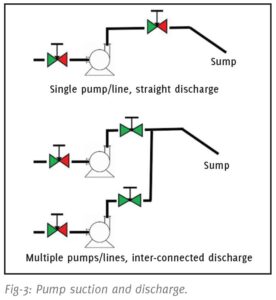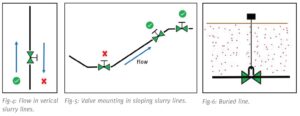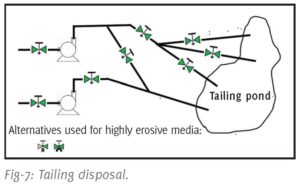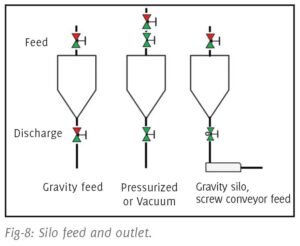Knife and slurry gate valves (KSG) are often selected when the media handled is not clean. This also involves the selection of a particular design that is best suited for an application. The proper choice of type provides for optimum costs and trouble-free operation. This article looks at typical general application situations and attempts to provide guidelines on the most appropriate type of valve to be used.
By Mr. Vijayakrishnan
About the author
Dr S. Vijayakrishnan is a valve professional with over 30 years’ experience, primarily in application engineering and marketing. He first worked with VAAS, a leading knife gate valve brand from India, rising to the position of President & Head Business Unit. He later worked for Bray as Global Product Manager of their knife gate valve range for another five years. Now retired, he spends time catching up on knife gate valve developments worldwide and trying to help younger valve professionals by sharing his knowledge. He welcomes inquiries and can be reached at vijykrishnan@gmail.com. their characteristics; for those who are not, an earlier article titled “Knife Gate & Slurry Gate Valves – A Review” published in Valve World, Dec 2019 could be useful).
Typically, knife gate valves are available in two versions: uni-directional or bi-directional. Uni-directional valves provide shut-off only in one direction; bi-directional valves provide same in both directions as in the case of most other valves. They may also be metal or soft seated.
Slurry gate valves, on the other hand, are bi-directional and typically elastomer seated. Some of the bi-directional valves like shear gate valves have a “preferred” flow direction, though they provide bi-directional shut-off. Slurry valves also come in many design variants: push-through seal, perimeter seal, shear gate, o-port, rotating disc to name a few. For use in the guidelines, the most widely used knife- and slurry gate valve types are listed. These would be pictorially represented as shown in Fig-1 (it is assumed that the reader is familiar with these valves and their characteristics; for those who are not, an earlier article titled “Knife Gate & Slurry Gate Valves – A Review” published in Valve World, Dec-2019 could be useful).
Mounting orientations
Mounting is not usually important for valves carrying clean media but needs some attention in the case of KSG valves. While most of the models can be mounted in any orientation, some orientations are preferred (Fig-2).
A preferred orientation is one that minimizes chances of obstruction to movement of gate by any possible settlement of media. Also, any mounting orientation other than vertical usually needs additional supports, typically for valves in sizes 250mm (10 inch) or larger.
You don’t see valves mounted upside down often, but in this way mounting knife gate and slurry valves could avoid sedimentation/settling/hardening at the bottom of the valve body. However, it may not be feasible as piping layouts do not usually allow such mounting but is a clever technique to use where space permits.
Usage scenarios: pump isolation

 KSG valves are designed for on/off duty and as such applications involving these valves are typically for isolation of pumps, pipelines, vessels, silos et cetera. An insignificantly small number is also employed for throttling or control application with some modifications. We will discuss these in the following sections. A typical pump uses a suction valve to isolate the pump from the sump and another on the discharge to isolate from the pipeline it is pumping to. Typically, two scenarios are possible in the first, the discharge pipeline goes straight to the sump, through vessels, equipment etc. of course. In the second case multiple pumps discharge to a manifold and / or inter-connected discharge piping as shown (Fig-3). As can be noted, the valve at the pump suction sees flow only in one direction and a uni-directional valve can be used in such a location. Of course, a bi-directional valve can be used here as well. On the discharge side, a uni-directional valve can be used in the case of a single discharge line; but for interconnected discharge, a bi-directional valve must be used as it can be subjected to reverse pressure when shut.
KSG valves are designed for on/off duty and as such applications involving these valves are typically for isolation of pumps, pipelines, vessels, silos et cetera. An insignificantly small number is also employed for throttling or control application with some modifications. We will discuss these in the following sections. A typical pump uses a suction valve to isolate the pump from the sump and another on the discharge to isolate from the pipeline it is pumping to. Typically, two scenarios are possible in the first, the discharge pipeline goes straight to the sump, through vessels, equipment etc. of course. In the second case multiple pumps discharge to a manifold and / or inter-connected discharge piping as shown (Fig-3). As can be noted, the valve at the pump suction sees flow only in one direction and a uni-directional valve can be used in such a location. Of course, a bi-directional valve can be used here as well. On the discharge side, a uni-directional valve can be used in the case of a single discharge line; but for interconnected discharge, a bi-directional valve must be used as it can be subjected to reverse pressure when shut.
Pipeline isolation
Valves are also used in pipelines for one of two purposes: to isolate a section of the pipeline or to divert the flow from one to another. Generally, the selection of valves is straight forward and primarily made to suit the media and its condition.
However, in the case of KSG valves, few additional factors need to be considered. One is not to use uni-directional knife gate valves at a location where flow direction may be reversed for operational reasons.
Another aspect stems from the type of media that these valves usually are used for, such as slurries, sludges, and the like. Care should be taken to see that the chances of media settling around the valve and possibly dewatering should be avoided. This will involve proper selection of flow direction, pipeline layout and gradients involved. Some typical guidelines are shown in the sketches here (Fig-4,5).
Location of the valve at dead ends of pipelines need to take into consideration the body style of the valve. Many KSG valves have wafer, flangeless bodies and as such are difficult (and inadvisable) to mount on dead end pipe flanges. Also, the shut-off pressure capabilities may be lower than full rating when mounted between pipeline sections, and manufacturer’s recommendations need to be considered for same.

Buried pipelines
 Another situation is usage in buried pipelines. Most of the KSG valves have bonnetless OS & Y designs and they cannot be used for buried service. Few models are offered by manufacturers with bonnets, and those need to be selected for such applications. Often stem extensions are also used (Fig-6).
Another situation is usage in buried pipelines. Most of the KSG valves have bonnetless OS & Y designs and they cannot be used for buried service. Few models are offered by manufacturers with bonnets, and those need to be selected for such applications. Often stem extensions are also used (Fig-6).
Bonneted versions of knife gate valves are also selected when even small amount of gland packing leakage is objectionable. Many sewage treatment plants prefer to use bonneted knife gate valves for better containment of media.
Double block and bleed isolation is not a common requirement where these valves are used. However, it may be desirable in some cases, for example, in some mine site pipe layouts that are modified regularly as in tailing disposal (Fig-7). Push-through seal slurry valves with their twin seat sealing and body drain provision can provide limited DBB functionality in such cases.
Silo isolation
 Handling powders in silos and hoppers is a major usage area for knife gate valves. These applications takes advantage of their ability to cut through powders and close. In general, the valve should close against a moving column of powder for proper functioning. They are not designed to close against a stagnant column of material, especially when dense and tightly packed (Fig-8).
Handling powders in silos and hoppers is a major usage area for knife gate valves. These applications takes advantage of their ability to cut through powders and close. In general, the valve should close against a moving column of powder for proper functioning. They are not designed to close against a stagnant column of material, especially when dense and tightly packed (Fig-8).
Typically, isolation valves are required at two locations: as a feed valve at silo inlet and as discharge valve from silo outlet. Large majority of applications involve silos where the powder is fed or discharged by gravity flow. These applications only require the valves to be ‘powder tight’ and in such cases, uni-directional metal seated valves are used. Often it is recommended to mount them in the reverse flow orientation as it avoids material build up on seat which faces away from powder flow.
Material cut-off
When the silo is pressurized or kept under vacuum for process or conveying needs, the usage of valves would be different. Often a material cut-off valve (typically a uni-directional knife gate valve, reverse mounted) is used with another tight sealing valve below it as a combination. The tight sealing valve could be a dome valve, a butterfly valve or even a bi-directional soft seated gate valve. Another aspect to be considered for silo discharge valves is whether they are discharging to atmospheric pressure or to other equipment downstream such as a screw conveyor. In the latter case, the valve may be required to close against a stagnant powder column in an upset situation (say, when a downstream screw conveyor malfunctions). Such locations would need an O-port gate valve as it can cut through stagnant media and still operate well.
This is part 1 of a 2-part article on this topic. This first part was originally published in the October 2021 issue of Valve World magazine. The second part was published in the November 2021 issue. The 2nd part will be posted here online in the coming weeks.
About this Featured Story
This Featured Story is an article from our Valve World Magazine October 2021 issue. To read other featured stories and many more articles, subscribe to our print magazine.
“Every week we share a new Featured Story with our Valve World community. Join us and let’s share your Featured Story on Valve World online and in print.”


